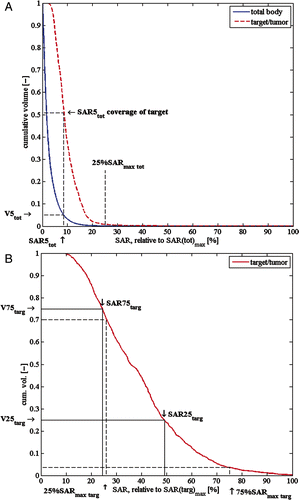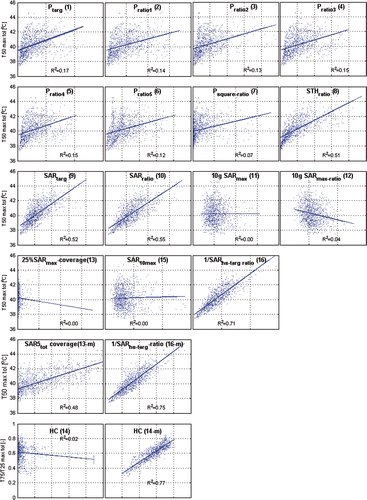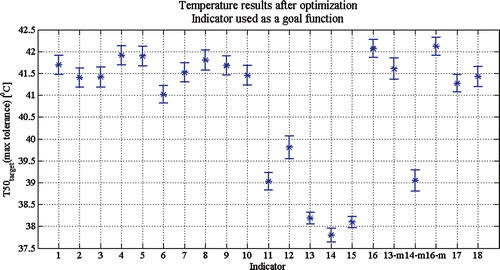Figures & data
Table
Table I. Characteristics of the 36 patient models that were used to verify the found indicators. Averages and standard deviations are given.
Figure 2. Axial view of the BSD2000 Sigma 60 applicator, with the four channels, each connected to two antennas and a combined patient-applicator model.

Table II. Tissues, defined in the patient model and their electromagnetic and thermal properties at 77 MHz, 37 °C and under thermal stress Citation[34],Citation[44],Citation[45].
Table III. Quality indicators found in literature with a short explanation of their functionality.
Figure 3. Illustration of SAR5 definition: SAR(tot)5 covers a substantial part of the target (A), and of 25%SAR targ max and 75%SAR targ max definition versus SAR25targ and SAR75targ definition (B). Both histograms are averages of 10 patient models.

Table IV. Heuristic evaluation of the quality indicators from .
Table V. Suggested modified and new quality indicators for characterisation and SAR optimisation.
Figure 4. Correlation of all indicators with target temperatures. Each indicator is individually plotted in a separate subfigure. Above each subfigure, the indicator number is depicted. R2 correlation coefficients in each subfigure indicate the amount of correlation between the respective indicator and the corresponding T50targ value.

Figure 5. T50targ at the maximum patient tolerance, after optimisation with each indicator. The average T50targ over 36 patients is shown, together with SE of means as error bars.

